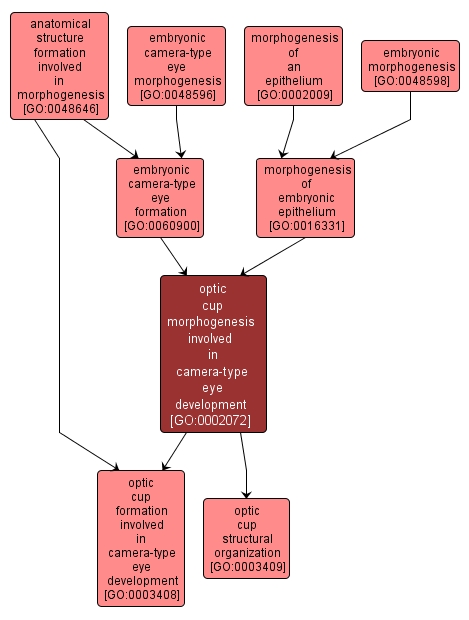| Desc: |
The invagination of the optic vesicle to form two-walled indentations, the optic cups, that will go on to form the retina. This process begins with the optic vesicle becoming a two-walled structure and its subsequent shape changes. It does not include the fate commitment of cells to become the pigmented retina and the neural retina. An example of this process is found in Mus musculus. |














